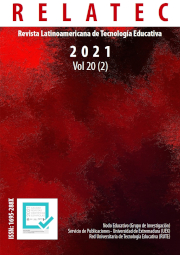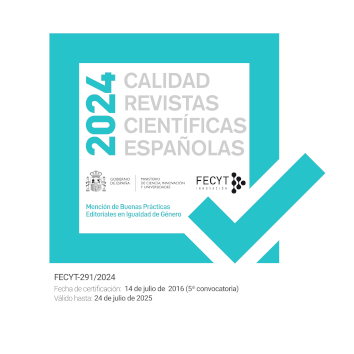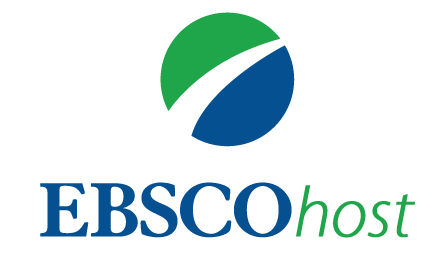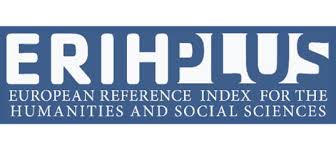Effect of Science Students Interactions with Augmented Reality Virtual Labs for Spatial Visualization Development
DOI:
https://doi.org/10.17398/1695-288X.20.2.29Keywords:
Technology Education, Simulated Environment, Science Instruction, Hands on Science, Visual PerceptionAbstract
The main scope of this article is to highlight the potential of student interactions in Science teaching, from educational resources in augmented reality, and its effect on the development of spatial visualization skills. Therefore, it presents a contextualization about Science teaching, the use of real laboratories, as well as its limitations, presenting as an alternative the use of educational resources in augmented reality with the support of mobile devices. The solution was tested in activities that complement the Science teaching and learning process with basic education students in Brazil. It aimed to investigate whether students' interactions with educational resources in augmented reality can contribute to the development of spatial visualization skills. The methodological procedures were organized in a quasi-experimental approach, through activities foreseen in a test protocol carried out with 208 participants divided into two groups: Control (n=96 subjects) and Experimental (n=112 subjects). In general terms, the results of this research point to contributions arising from the interactions of students with educational resources in augmented reality, both for the development of spatial visualization skills, as well as for the observation of the phenomenon and understanding of the abstract concepts associated with it, formulation and testing of hypotheses, as well as conclusions from the situations experienced.
Downloads
References
Arici, F., Yildirim, P., Caliklar, Ş., & Yilmaz, R. (2019). Research trends in the use of augmented reality in science education: Content and bibliometric mapping analysis. Computers & Education, 142, 1-23. doi: 10.1016/j.compedu.2019.103647
AVATAR. (2021). Página oficial do Projeto AVATAR - Ambiente Virtual de Aprendizagem e Trabalho Acadêmico Remoto.
Porto Alegre: Universidade Federal do Rio Grande do Sul. Recuperado a partir de http://www.ufrgs.br/avatar
Batista, R. F. M., & Silva, C. C. (2018). A abordagem histórico-investigativa no ensino de Ciências. Estudos Avançados, 32(94), 97-110. 2018 doi: 10.1590/s0103-40142018.3294.0008
Burkett, V. C., & Smith, C. (2016). Simulated vs. Hands-on Laboratory Position Paper. Electronic Journal of Science Education, 20(9), 8-24. Recuperado a partir de http://ejse.southwestern.edu/article/view/16255
Chang, J. S. et al. (2017). Evaluating the effect of tangible virtual reality on spatial perspective taking ability. 5th Symposium on Spatial User Interaction. doi: 10.1145/3131277.3132171
Città, G. et al. (2019). The effects of mental rotation on computational thinking. Computers & Education, 141. doi: 10.1016/j.compedu.2019.103613
Chiu, J. L., DeJaegher, C. J., & Chao, J. (2015). The effects of augmented virtual science laboratories on middle school students’ understanding of gas properties. Computers & Education, 85, 59-73. doi: 10.1016/j.compedu.2015.02.007
Herpich, F. (2019). Recursos educacionais em realidade aumentada para o desenvolvimento da habilidade de visualização espacial em física. (Dissertação de doutorado, Universidade Federal do Rio Grande do Sul, Porto Alegre, Brasil).
Herpich, F., Rossi, T., Tibola, L., Ferreira, V., & Tarouco, L. (2017). Learning Principles of Electricity Through Experiencing in Virtual Worlds. In D. Beck, Communications In D. Beck, C. Allison, L. C. Morgado, J. Pirker, F. Khosmood, J. Richter, & C. Gütl (Eds.), Computer And Information Science - Immersive Learning Research Network (ILRN), 725, (pp. 229-242). Springer.
Hinojosa, A. J. (2015) Investigations on the impact of spatial ability and scientific reasoning of student comprehension in physics, State Assessment Test, and STEM courses. [Tese de Doutorado, University of Texas at Arlington]. Recuperado a partir de http://hdl.handle.net/10106/25121
Huk, T. (2006). Who benefits from learning with 3D models? The case of spatial ability. Journal of Computer Assisted Learning, 22(6), 392-404. doi: 10.1111/j.1365-2729.2006.00180.x
Ibáñez, M., Di Serio, Á., Villarán, D., & Delgado-Kloos, C. (2019). Impact of Visuospatial Abilities on Perceived Enjoyment of Students toward an AR-Simulation System in a Physics Course. 2019 IEEE Global Engineering Education Conference (EDUCON), 995-998. doi: 10.1109/EDUCON.2019.8725185
Irwanto, Saputro, A. D., Rohaeti, E., & Prodjosantoso, A. K. (2019). Using Inquiry-Based Laboratory Instruction to Improve Critical Thinking and Scientific Process Skills among Preservice Elementary Teachers. Eurasian Journal of Educational Research, 80, 151-170. doi: 10.14689/ejer.2019.80.8
Kapici, H. O., Akcay, H., & Jong, T. (2019). Using Hands-On and Virtual Laboratories Alone or Together-Which Works Better for Acquiring Knowledge and Skills?. Journal Of Science Education And Technology, 28(3), 231-250. doi: 10.1007/s10956-018-9762-0
Klahr, D., Triona, L. M., & Williams, C. (2007). Hands on What? The Relative Effectiveness of Physical Versus Virtual Materials in an Engineering Design Project by Middle School Children. Journal of Research in Science Teaching, 44(1), 183–203. doi: 10.1002/tea.20152
Kozhevnikov, M., Hegarty, M., & Mayer, R. (2002). Spatial Abilities in Problem Solving in Kinematics. In M. Anderson, M., Meyer, B., & Olivier P. (Eds.), Diagrammatic Representation and Reasoning (pp. 155-171), Springer.
Kozhevnikov, M., Motes, M. A., & Hegarty, M. (2007). Spatial visualization in physics problem solving. Cognitive Science, 31(4), 549-579. doi:10.1080/15326900701399897
Kozhevnikov, M., & Thornton, R. (2006). Real-Time Data Display, Spatial Visualization Ability, and Learning Force and Motion Concepts. Journal of Science Education and Technology, 15(1), 111-132. doi:10.1007/s10956-006-0361-0
Maison, Darmaji, Astalini, Kurniawan, D. A., & Indrawati, P. S. (2019). Science Process Skills and Motivation. Humanities & Social Sciences Reviews, 7(5), 48-56. doi: 10.18510/hssr.2019.756
Farrell, S. et al. (2015). A profile of the spatial visualisation abilities of first year engineering and science students. 6th Research in Engineering Education Symposium (REES 2015). 13-15. doi: 10.21427/D75226
Masril, Hidayati, & Darvina, Y. (2019). Implementation of virtual laboratory through discovery learning to improve student’s physics competence in Senior High School. Journal of Physics: Conference Series, 1185, 1-8. doi: 10.1088/1742-6596/1185/1/012114
Mayer, R. E. (Ed.). (2009). Multimedia Learning (2nd ed.). Cambridge: Cambridge University Press. doi: 10.1017/CBO9780511811678
Meltzer, D. E. (2005). Relation Between Students’ Problem-Solving Performance and Representational Format. American Journal of Physics, 73(5), 463-478. doi: 10.1119/1.1862636
Nagy-Kondor, R. (2016). Spatial Ability: Measurement and Development. Visual-Spatial Ability in STEM Education, 35-58. doi: 10.1007/978-3-319-44385-0_3
Nunes, F., et al. (2014). Laboratório Virtual de Química: uma ferramenta de estímulo à prática de exercícios baseada no Mundo Virtual OpenSim. XXV Simpósio Brasileiro de Informática na Educação, 712-721. doi: 10.5753/cbie.sbie.2014.712
Pallrand, G. J., & Seeber, F. (1984). Spatial Ability and Achievement in Introductory Physics. Journal of Research in Science Teaching, 21(5), 507-516. doi: 10.1002/tea.3660210508
Peffer, M. E., Beckler, M. L., Schunn, C., Renken, M., & Revak, A. (2015). Science Classroom Inquiry (SCI) Simulations: A Novel Method to Scaffold Science Learning. PLOS ONE, 10(3), 1-14. doi: 10.1371/journal.pone.0120638
Prieto, G. (2010). Análisis psicométrico de un test informatizado de Visualización Espacial. In M. C. R. A. Joly & C. T. Reppold (Eds.), Estudos de Testes Informatizados para Avaliação Psicológica. (pp. 141-162). São Paulo: Casa do Psicólogo.
Quintero, E., Salinas, P., Gonzáles-Mendívil, & E., Ramírez, H. (2015). Augmented Reality app for Calculus: A Proposal for the Development of Spatial Visualization. Procedia Computer Science, 75, 301-305. doi: 10.1016/j.procs.2015.12.251
Scalise, K. et al. (2011). Student learning in science simulations: Design features that promote learning gains. Journal of Research In Science Teaching, 48(9), 1050-1078. doi: 10.1002/tea.20437
Silva, D. V., Joly, M. C. R. A., & Prieto, G. (2011). Relação entre habilidades espaciais e desempenho no ensino médio. Revista Polis E Psique, 1(1), 61-79. doi: 10.22456/2238-152X.20371
Sorby, S., Casey, B., Veurink, N., & Dulaney, A. (2013). The role of spatial training in improving spatial and calculus performance in engineering students. Learning And Individual Differences, 26, 20-29. doi: 10.1016/j.lindif.2013.03.010
Tarouco, L. M. R. (2019). Inovação Pedagógica com Tecnologia: mundos imersivos e agentes conversacionais. Revista Novas Tecnologias na Educação (RENOTE), 17(2), 92-108. doi: 10.22456/1679-1916.96590
Vieira, L. B., Fernandes, G. W. R., Maldaner, O. A., & Massena, E. P. (2018). Situación de estudio: ¿qué se estan publicando en eventos y revistas del área de enseñanza de las ciencias? Ensaio Pesquisa em Educação em Ciências, 20, 1-29. doi: 10.1590/1983-21172018200101
Yilmaz, R., Baydas, O., Karakus, T., & Goktas, Y. (2015). An examination of interactions in a three-dimensional virtual world. Computers & Education, 88, 256-267. doi: 10.1016/j.compedu.2015.06.002
Downloads
Published
Issue
Section
License
Authors who publish in this journal accept the following conditions:
1. The Author retains copyright in the article. Upon acceptance of the article, the author shall grant to the Publisher the right of first publication of the article. with the dcoument registered with the Creative Commons Attribution-NonCommercial-NoDerivative 4.0 International (CC BY-NC-ND) license, which allows to third parties to use what is published whenever they mention the authorship of the work and the first publication in this journal.
2. Authors can make other independent and additional contractual agreements for the non-exclusive distribution of the article published in this journal (eg, include it in an institutional repository or publish it in a book) provided they clearly indicate that the work was published for the first time in this journal.
3. Authors are allowed and recommended to publish their work on the Internet (for example on institutional or personal pages) before and during the review and publication process, as it can lead to productive exchanges and a greater and faster diffusion of published work (see The Effect of Open Access).









